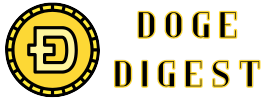In the rapidly evolving world of cryptocurrency, Dogecoin has captured the imagination of investors and enthusiasts alike with its playful origin and surprising market resilience. Yet, behind the memes and market buzz lies a critical reality: safeguarding your Dogecoin from fraud is more important than ever. As digital currencies become an integral part of our financial landscape, understanding smart strategies to protect your assets is essential. This article delves into practical, effective ways to guard your Dogecoin, helping you navigate the risks and keep your investment secure in an increasingly complex digital frontier.
Understanding the Risks Facing Your Dogecoin Holdings
When investing in Dogecoin, it’s vital to recognize that the digital currency landscape is riddled with pitfalls that can put your assets in jeopardy. Scammers often exploit the decentralized nature of cryptocurrencies by employing sophisticated tactics such as phishing, fake wallets, and Ponzi schemes. These threats don’t just target beginners – even seasoned holders can fall victim without proper vigilance. Understanding the nuances of these risks is the first step towards safeguarding your holdings in an ever-evolving crypto ecosystem.
Common vulnerabilities include:
- Phishing schemes: Fraudulent websites or emails disguised as legitimate exchanges or wallets.
- Fake wallet applications: Malicious software designed to steal private keys and seed phrases.
- Pump and dump groups: Coordinated efforts to artificially inflate Dogecoin prices before crashing them.
Here’s a concise breakdown of typical fraud types and their primary warning signs to watch for:
| Fraud Type | Key Indicators | Preventive Actions |
|---|---|---|
| Phishing | Suspicious URLs, unsolicited messages | Verify website domains, use 2FA |
| Fake Wallets | Unverified apps, requests for private info | Download only from official sources |
| Pump & Dump | Sudden price spikes, aggressive promotions | Avoid hype-driven investments |
Choosing Secure Wallets for Safe Storage
When it comes to safeguarding your Dogecoin, selecting the right wallet is paramount. The digital landscape offers a myriad of options, but not all wallets are designed with robust security measures. Prioritize wallets that provide two-factor authentication (2FA), encrypted private keys, and multi-signature capabilities. These features act as critical barriers, adding extra layers of protection against hacking attempts and unauthorized access.
Hardware wallets are widely regarded as one of the most secure options for storing cryptocurrencies, including Dogecoin. Unlike software wallets that connect to the internet, hardware wallets keep your private keys offline – a strategy known as cold storage. This dramatically reduces vulnerability to phishing scams or malware. Brands like Ledger and Trezor have earned trust in the crypto community for their durability and user-friendly interfaces.
Before settling on a wallet, consider the following factors to ensure comprehensive protection:
- Open-source code: Transparency allows experts to audit the security of the wallet’s software.
- Regular updates: Frequent enhancements patch vulnerabilities and keep up with evolving cyber threats.
- Backup options: Secure seed phrases or recovery keys are essential for restoring access if your device is lost or damaged.
| Wallet Type | Security Level | Accessibility |
|---|---|---|
| Hardware | High | Limited (Offline) |
| Software | Moderate | High (Online) |
| Mobile | Moderate | High |
| Paper | High | Low |
Recognizing and Avoiding Common Fraud Scams
Fraud schemes targeting Dogecoin holders often come disguised as tempting opportunities. One of the biggest red flags is unsolicited offers promising “guaranteed returns” or “exclusive insider tips.” These often arrive via emails, social media DMs, or suspicious websites masquerading as official exchanges. Always verify the source before engaging, and remember: if it sounds too good to be true, it usually is.
Phishing is another common trap where attackers send fake links that mimic legitimate Dogecoin wallets or marketplaces. Clicking on these links can lead to stolen credentials or malware installations. Be vigilant with URLs-look for misspellings, unofficial domains, and browser security indicators. Enabling two-factor authentication (2FA) adds an extra layer of protection, making it harder for bad actors to gain unauthorized access.
Below is a quick guide to spotting common scam tactics:
- Impersonation: Fake profiles or websites pretending to represent trustworthy sources.
- Pump and Dump: Coordinated hype to artificially inflate Dogecoin’s price before selling off.
- Fake Giveaways: Scammers claim to double your Dogecoin if you send them coins first.
- Malicious Software: Fake apps or browser extensions aiming to steal private keys.
| Scam Type | Warning Signs | Preventive Action |
|---|---|---|
| Impersonation | Unverified accounts, urgent requests | Verify identities on official sites |
| Phishing | Suspicious URLs, unexpected emails | Check links and enable 2FA |
| Fake Giveaways | Promises of doubling assets | Never send coins to unknown parties |
Implementing Two Factor Authentication for Added Protection
Adding an extra layer of security to your Dogecoin wallet is no longer optional-it’s essential. By requiring not just a password but a secondary verification step, you significantly reduce the risk of unauthorized access. This secondary step, often delivered via a mobile app or SMS, ensures that even if your password is compromised, your assets remain protected. Think of it as a digital double lock, making it much harder for cybercriminals to break in.
The setup process is straightforward and typically involves linking your Dogecoin account with an authenticator app like Google Authenticator, Authy, or Microsoft Authenticator. Once connected, every login attempt will require a time-sensitive code generated by these apps, ensuring that only you can access your funds. Some platforms even offer biometric options or hardware keys for keyless and phishing-resistant confirmation.
| Authenticator Method | Security Level | Convenience | Recommended For |
|---|---|---|---|
| Mobile Authenticator Apps | High | Moderate | Most Users |
| SMS Codes | Medium | High | Occasional Access |
| Hardware Security Keys | Very High | Low | Advanced Users & Large Holdings |
- Enable 2FA immediately after creating your wallet or exchange account.
- Regularly update your authentication apps and backup your recovery codes safely offline.
- Avoid SMS-based 2FA when possible, as SIM swapping attacks can bypass this method.
Staying Informed with Regular Security Updates and Best Practices
In the rapidly evolving world of cryptocurrency, staying ahead of fraudulent schemes means keeping your knowledge fresh and your software up to date. Regularly installing updates for your wallets and security tools isn’t just about patches-it’s your first line of defense against newly discovered vulnerabilities that cybercriminals eagerly exploit. Make it a habit to enable automatic updates where possible, so you never miss critical security improvements tailored to protect your Dogecoin holdings.
Beyond software maintenance, cultivating sound security habits is vital. Incorporate practices such as:
- Using strong, unique passwords combined with multi-factor authentication (MFA) wherever available.
- Verifying sources before clicking on any links or downloading attachments, especially from unsolicited emails.
- Regularly reviewing transaction histories to spot any unfamiliar activity early on.
These small but consistent actions build a robust security ecosystem around your digital assets, drastically lowering your risk of falling prey to fraud.
| Update Type | Security Benefit | Frequency |
|---|---|---|
| Wallet Software | Fix bugs & patch vulnerabilities | Monthly or as released |
| Operating System | Protects against malware & exploits | Weekly to monthly |
| Antivirus/Anti-Malware | Detects new threats instantly | Daily or automatic |
Q&A
Q&A: Guarding Your Dogecoin – Smart Strategies to Prevent Fraud
Q1: Why is it important to be cautious with my Dogecoin holdings?
A1: Dogecoin, like many cryptocurrencies, operates in a decentralized and largely unregulated space. This makes it an attractive target for scammers and hackers aiming to exploit users’ lack of security knowledge. Being cautious helps protect your assets from theft, fraud, and loss.
Q2: What are the most common types of fraud targeting Dogecoin holders?
A2: Some widespread scams include phishing attacks, fake wallet apps, Ponzi schemes, pump-and-dump groups, and fraudulent giveaways. Attackers often impersonate trusted figures or platforms to trick users into revealing private keys or sending Dogecoin to bogus addresses.
Q3: How can I securely store my Dogecoin?
A3: Use reputable wallets with strong security features. Hardware wallets, which store your private keys offline, are considered the safest option. If using software wallets, ensure they come from official sources and enable features like two-factor authentication (2FA). Avoid leaving Dogecoin on exchanges for extended periods.
Q4: What role do private keys and seed phrases play in Dogecoin security?
A4: Private keys and seed phrases are essentially the keys to your Dogecoin funds. If someone gains access to them, they control your assets. Never share these details, and store them offline in secure locations like a locked safe or encrypted storage.
Q5: How can I spot and avoid phishing attempts?
A5: Be suspicious of unsolicited messages or emails asking for your credentials or private keys. Always verify URLs carefully-avatars and domain names can be cleverly mimicked. When in doubt, navigate directly to official websites rather than clicking links.
Q6: Are public Wi-Fi networks safe for managing Dogecoin transactions?
A6: Public Wi-Fi often lacks strong security and can be intercepted by attackers. It’s best to avoid conducting Dogecoin transactions over public networks or use a trusted Virtual Private Network (VPN) to encrypt your connection.
Q7: What should I do if I suspect I’ve been targeted by a Dogecoin scam?
A7: Immediately stop any transactions and change your passwords and 2FA settings. If private keys were compromised, transfer your Dogecoin to a new secure wallet. Report the incident to cryptocurrency exchanges, relevant platforms, and, if applicable, local authorities.
Q8: Can following community guidelines help prevent fraud?
A8: Absolutely. Engaging with official Dogecoin forums, verified social media channels, and reputable news sources keeps you informed of current scams and security best practices. Staying educated is one of the best defenses against fraud.
Q9: How often should I update my security practices?
A9: The crypto landscape evolves rapidly, so regularly review and update your security measures. This includes updating wallet software, changing passwords periodically, and staying informed about emerging scams.
Q10: Is there a simple mindset shift that can improve my Dogecoin security?
A10: Think like a detective-patience, skepticism, and vigilance are your allies. Always double-check information, question too-good-to-be-true offers, and never rush your transactions. This cautious mindset is your first line of defense against fraud.
To Conclude
As the digital landscape continues to evolve, so do the tactics of those seeking to exploit it. Guarding your Dogecoin isn’t just about keeping your wallet secure-it’s about staying informed, vigilant, and proactive. By adopting smart strategies and embracing a cautious mindset, you can navigate the world of cryptocurrency with confidence, ensuring that your Dogecoin remains truly yours. In the end, protection is not just a precaution-it’s a commitment to your investment and peace of mind in an ever-changing digital frontier.




